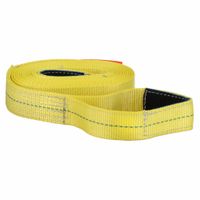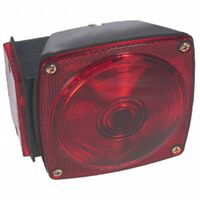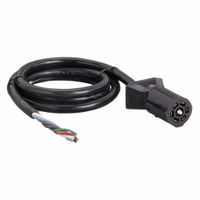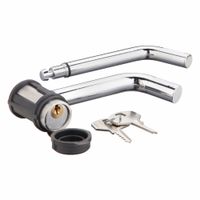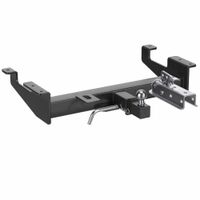Call +(254) 703 030 000 / 751 483 999 / 721 704 777
- Home
- Fleet Vehicle Maintenance
- Towing Trailer Equipment
.....Read More
Frequently Asked Questions
What are the different types of towing hitches?
There are several types of towing hitches, each designed for specific towing needs. The most common is the receiver hitch, which is a square tube mounted to the vehicle's frame, allowing for different ball mounts or accessories to be inserted. Weight-distributing hitches are crucial for heavier loads, as they distribute the trailer's tongue weight more evenly across the tow vehicle and trailer axles, improving stability and control. Gooseneck hitches are mounted in the bed of a pickup truck and are typically used for large agricultural or commercial trailers, offering superior stability due to their central mounting point. Fifth-wheel hitches are also mounted in a truck bed but are designed for recreational vehicles (RVs) and some commercial trailers, providing a secure and stable connection that mimics a semi-truck setup. Pintle hitches consist of a hook and a lunette ring, commonly found on military or heavy-duty construction equipment, known for their robustness in rugged terrain. Finally, bumper-mounted hitches are the simplest and often come integrated into a vehicle's bumper, suitable only for very light loads. Choosing the right hitch depends on the weight of the trailer, the type of vehicle, and the specific towing application.
How do I choose the right towing hitch for my vehicle?
When choosing a towing hitch, consider your vehicle's towing capacity, the weight of what you plan to tow (trailer, boat, etc.), and the hitch class required. Hitches are categorized by classes, from Class I (light-duty) to Class V (heavy-duty), each with different weight capacities. Ensure the hitch's capacity meets or exceeds your towing needs. Also, think about the hitch receiver size, which dictates the size of the ball mount you can use. Finally, check if any additional accessories like wiring harnesses or brake controllers are needed for safe and legal towing.
What is the difference between a tow strap and a tow cable?
A tow strap and a tow cable serve the same general purpose of recovering a stuck vehicle, but they differ significantly in their construction, application, and safety considerations.
A tow strap, often made of nylon or polyester, is designed with some elasticity. This stretch allows for a "snatch" recovery, where the kinetic energy from a moving recovery vehicle can be transferred smoothly to the stuck vehicle, gently pulling it free. Tow straps are generally lighter and easier to handle, and their elasticity reduces the shock load on both vehicles. They are ideal for lighter vehicles and situations where a gentle pull is sufficient, but they are not suitable for lifting or heavy-duty towing as they can stretch considerably under load.
A tow cable, typically made of steel wire, is much stronger and has very little to no stretch. This makes them ideal for heavy-duty towing, winching, or situations where a steady, powerful pull is required, such as pulling a vehicle out of a deep ditch or over an obstacle. However, the lack of elasticity means that a sudden jolt can create dangerous shock loads, potentially damaging vehicles or snapping the cable. If a steel cable breaks under tension, it can recoil with extreme force, posing a severe safety risk.
In summary, the choice between a tow strap and a tow cable depends on the specific recovery scenario. Tow straps are generally safer and more effective for lighter recovery tasks due to their elastic properties, while tow cables are better suited for heavier, more demanding pulls where a rigid connection is necessary, provided extreme caution is exercised.
How do trailer brake controls work?
Trailer brake controls, also known as brake controllers, are electronic devices that activate the electric brakes on a trailer, synchronizing them with the tow vehicle's brakes. This ensures smooth, controlled braking and prevents the trailer from pushing or pulling the tow vehicle.
There are two main types:1. Proportional Brake Controllers: These are the most common and effective type. They sense the tow vehicle's deceleration and apply a proportional amount of braking power to the trailer brakes. This means that the harder you brake in your tow vehicle, the harder the trailer brakes will apply. This results in very smooth and predictable stops.
2. Time-Delayed Brake Controllers: These controllers apply a predetermined amount of braking power to the trailer after a short delay once the tow vehicle's brakes are engaged. The braking force is set by the user and remains constant regardless of how hard the tow vehicle is braking. While less sophisticated than proportional controllers, they are generally more affordable.Both types connect to the tow vehicle's electrical system and typically use a wiring harness that plugs into the vehicle's brake light switch. When the driver presses the brake pedal in the tow vehicle, a signal is sent to the brake controller, which then sends a corresponding signal to the trailer's electric brakes, activating them. Many modern brake controllers also feature manual override levers, allowing the driver to apply the trailer brakes independently if needed.
What is the purpose of a draw bar in towing?
A draw bar is a critical component in towing, primarily designed to provide a secure and stable connection between a towing vehicle and a trailer or other towed implement. Its main purpose is to transmit the pulling force from the tow vehicle to the load being towed, while also allowing for articulation and movement between the two.
Key functions of a draw bar include: * **Connection Point:** It provides a standardized attachment point for various types of hitches, such as ball hitches, pintle hitches, or clevis hitches, depending on the application and load.
* **Load Distribution:** While not its primary role, a properly designed and positioned draw bar can contribute to better weight distribution between the towing vehicle and the trailer, enhancing stability and handling.
* **Articulation:** The draw bar allows the trailer to pivot and move independently from the towing vehicle, which is essential for turning, navigating uneven terrain, and absorbing shocks during travel.
* **Safety:** A robust draw bar ensures a secure link, preventing accidental detachment of the trailer during towing, which is crucial for safety on roads or in agricultural settings.
* **Versatility:** Many draw bars are adjustable in height or length, allowing them to accommodate different trailer types and towing situations. Some can also be easily removed or swapped for different towing needs.In essence, the draw bar acts as the foundational link in a towing system, ensuring the safe and efficient transfer of power from the tow vehicle to the towed load.
How do I properly secure a trailer to a towing vehicle?
Please tell me what you would like to know more about.
What are the safety considerations when using towing chains?
When using towing chains, safety is paramount to prevent accidents and injuries. Always inspect chains for wear, rust, or damage before use; even minor imperfections can significantly compromise strength. Ensure the chain's working load limit (WLL) meets or exceeds the weight of the towed load. Never exceed the WLL, as this can lead to chain failure.
Proper attachment is crucial. Connect chains securely to designated towing points on both vehicles. Avoid wrapping chains around axles or suspension components, which can cause damage or detachment. Use appropriate clevis hooks or shackles rated for the chain's strength.
Maintain adequate tension in the chain to prevent slack that could cause sudden jerks or "snapping" under load, which is extremely dangerous. However, do not overtighten, as this can strain the chain and vehicle frames.
Be aware of your surroundings, especially when turning or braking. Adjust your speed and driving style to account for the increased mass and reduced maneuverability of the towed vehicle. Avoid sudden movements that can put undue stress on the chains.
Finally, always have a secondary safety measure, such as safety chains or breakaway cables, in addition to the primary towing chain. These act as a backup in case the main chain fails, preventing the towed vehicle from becoming a runaway hazard. Regular maintenance and adherence to these safety protocols are essential for safe towing operations.
How do I install a trailer hitch on my vehicle?
Please tell me what topic you would like me to elaborate on.
What are the best practices for using trailer jacks?
To ensure safety and efficiency when using trailer jacks, several best practices should be followed. Always ensure the trailer is on a level, firm surface to prevent it from rolling or tipping. Chock the wheels on the opposite side of the trailer from where you are working to further prevent movement. Before lifting, make sure the jack has sufficient weight capacity for the trailer you are lifting. Position the jack on a sturdy part of the trailer frame, avoiding axles or other components that could be damaged.
Once the jack is properly positioned, slowly raise the trailer to the desired height. Never work under a trailer supported only by a jack; always use jack stands once the trailer is lifted. Jack stands provide a more stable and secure support. When lowering the trailer, do so slowly and carefully, ensuring the area is clear. Regularly inspect your trailer jack for any signs of wear, damage, or malfunction, and lubricate moving parts as needed to ensure smooth operation. Following these practices helps prevent accidents and prolongs the life of your equipment.
How do I maintain and inspect towing equipment for safety?
Maintaining and inspecting towing equipment is crucial for safety. Regularly check all components, including hitches, balls, safety chains, and wiring, for any signs of wear, damage, or corrosion. Ensure the hitch is securely attached to the tow vehicle and the trailer coupler is properly seated and locked onto the hitch ball. Safety chains should be crossed under the coupler and attached to the tow vehicle, providing a backup in case of detachment.
Inspect the wiring harness for frayed wires, cracked insulation, or loose connections, as proper lighting and braking signals are essential. Test all lights (brake lights, turn signals, and running lights) before each trip. For braking systems, if equipped, verify they are functioning correctly and that the brake controller is properly adjusted.
Lubricate moving parts as recommended by the manufacturer to prevent rust and ensure smooth operation. Store equipment in a dry place to prevent weather-related damage. Following these steps and consulting your equipment's manuals will help ensure a safe towing experience.

